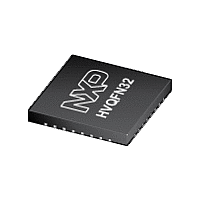LPC1343FHN33 NXP Semiconductors, LPC1343FHN33 Datasheet - Page 26

LPC1343FHN33
Manufacturer Part Number
LPC1343FHN33
Description
The LPC1343FHN33 is a ARM Cortex-M3 based microcontroller for embedded applications featuring a high level of integration and low power consumption
Manufacturer
NXP Semiconductors
Datasheet
1.LPC1311FHN33.pdf
(73 pages)
Available stocks
Company
Part Number
Manufacturer
Quantity
Price
Company:
Part Number:
LPC1343FHN33
Manufacturer:
SG
Quantity:
200
Part Number:
LPC1343FHN33
Manufacturer:
NXP/恩智浦
Quantity:
20 000
Company:
Part Number:
LPC1343FHN33,551
Manufacturer:
NXP
Quantity:
780
NXP Semiconductors
LPC1311_13_42_43
Product data sheet
7.18.1.2 System oscillator
7.18.1.3 Watchdog oscillator
7.18.2 System PLL and USB PLL
7.18.3 Clock output
7.18.4 Wake-up process
Upon power-up, any chip reset, or wake-up from Deep power-down mode, the
LPC1311/13/42/43 use the IRC as the clock source. Software may later switch to one of
the other available clock sources.
The system oscillator can be used as the clock source for the CPU, with or without using
the PLL. On the LPC1342/43, the system oscillator must be used to provide the clock
source to USB.
The system oscillator operates at frequencies of 1 MHz to 25 MHz. This frequency can be
boosted to a higher frequency, up to the maximum CPU operating frequency, by the
system PLL.
The watchdog oscillator can be used as a clock source that directly drives the CPU, the
watchdog timer, or the CLKOUT pin. The watchdog oscillator nominal frequency is
programmable between 7.8 kHz and 1.7 MHz. The frequency spread over processing and
temperature is 40 % (see also
The LPC1342/43 contain a system PLL and a dedicated PLL for generating the 48 MHz
USB clock. The LPC131x contain the system PLL only. The system and USB PLLs are
identical.
The PLL accepts an input clock frequency in the range of 10 MHz to 25 MHz. The input
frequency is multiplied up to a high frequency with a Current Controlled Oscillator (CCO).
The multiplier can be an integer value from 1 to 32. The CCO operates in the range of
156 MHz to 320 MHz, so there is an additional divider in the loop to keep the CCO within
its frequency range while the PLL is providing the desired output frequency. The output
divider may be set to divide by 2, 4, 8, or 16 to produce the output clock. The PLL output
frequency must be lower than 100 MHz. Since the minimum output divider value is 2, it is
insured that the PLL output has a 50 % duty cycle. The PLL is turned off and bypassed
following a chip reset and may be enabled by software. The program must configure and
activate the PLL, wait for the PLL to lock, and then connect to the PLL as a clock source.
The PLL settling time is 100 s.
The LPC1311/13/42/43 features a clock output function that routes the IRC oscillator, the
system oscillator, the watchdog oscillator, or the main clock to an output pin.
The LPC1311/13/42/43 begin operation at power-up and when awakened from Deep
power-down mode by using the 12 MHz IRC oscillator as the clock source. This allows
chip operation to resume quickly. If the main oscillator or the PLL is needed by the
application, software will need to enable these features and wait for them to stabilize
before they are used as a clock source.
All information provided in this document is subject to legal disclaimers.
Rev. 4 — 20 June 2011
Table
16).
32-bit ARM Cortex-M3 microcontroller
LPC1311/13/42/43
© NXP B.V. 2011. All rights reserved.
26 of 73
















